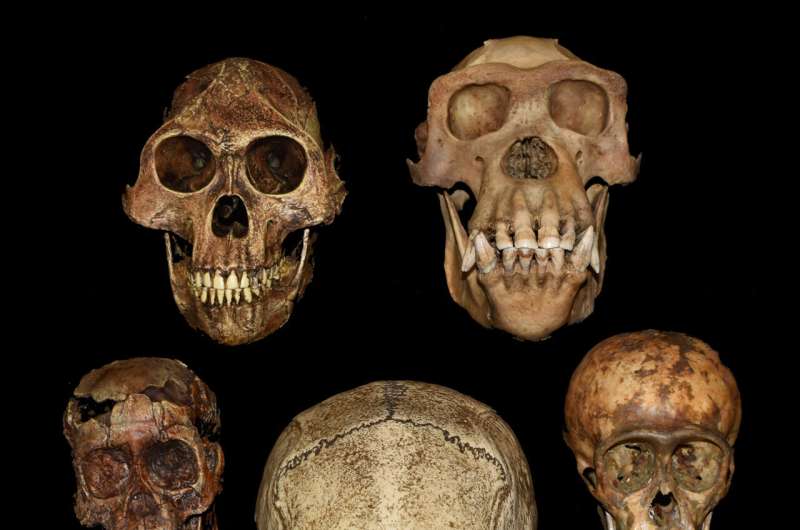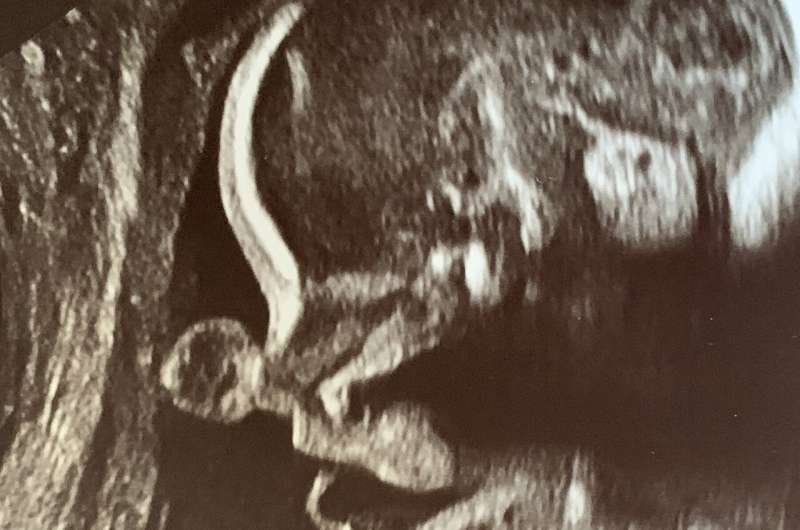October 4, 2022 report
Hominid prenatal growth rates found to have increased after lineage split from chimps

A combined team of researchers from Western Washington University and the University of California, Berkeley, has found evidence indicating that the human linage that split from chimps underwent an increase in prenatal growth rate soon after the split. In their paper published in Proceedings of the National Academy of Sciences, the group describes their study of prenatal growth rates in modern primates and models showing such rates in ancient primates.
Prior research has shown that the prenatal growth rate for humans is faster than for all of the other primates—a human fetus, for example, grows by approximately 11.6 grams a day, while gorillas grow by just 8.2 grams per day. It has been suggested by some researchers that the faster prenatal growth rate led to the relatively speedy evolution of a larger brain. In this new effort, the researchers wondered when the increased growth rate began in the human linage.
The researchers began their work by studying prenatal growth rates in multiple types of modern primates—they found that measurement of the first and third molar provided a good correlation ratio. They then created a model for calculating prenatal growth rate in ancient primates based on their fossilized teeth and used it to calculate the prenatal growth rate for 13 hominid species.
The researchers found that prenatal growth rate in the linage that developed into humans began to speed up after diverging from chimpanzees approximately 5 to 6 million years ago. They also found that the increased rate matched that of modern humans as far back as 1 million years ago.

The researchers acknowledge that they do not know why the growth rate of molars corelates with prenatal growth rate, but plan to look into it. They also acknowledge that their work is not verifiable because it is not possible to measure prenatal growth rate in primates that no longer exist. They note that the rise in prenatal growth rate they calculated does coincide with similar estimates made by other teams using measurements of brain and pelvis size increases.
More information: Tesla A. Monson et al, Teeth, prenatal growth rates, and the evolution of human-like pregnancy in later Homo, Proceedings of the National Academy of Sciences (2022). DOI: 10.1073/pnas.2200689119
Journal information: Proceedings of the National Academy of Sciences
© 2022 Science X Network





















